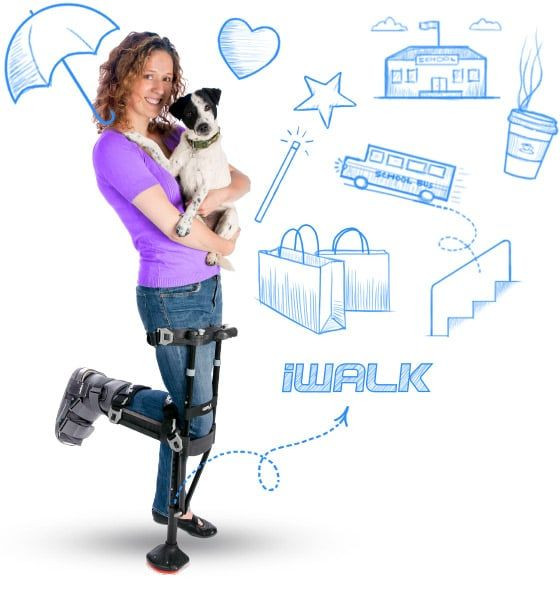Can Crutches, Canes, Knee Scooters Lead To Muscle Atrophy? This Mobility Device Can Avoid Major Leg Injuries

According to the National Institutes of Health, there are around 6.5 million people in the country who use a cane, walker, or crutches to assist with their mobility. Many of these people are prescribed crutches or knee scooters for lower leg injuries. Yet those devices come with their own set of problems, making them difficult to use. Crutches often lead to muscle atrophy, make it difficult to use the stairs, and if they fall to the floor it can become a gymnastics maneuver to try and pick them up.
Millions of people are prescribed crutches or knee scooters for lower leg injuries, but those with lower leg injuries have a better option to consider, like the iWALK2.0, a hands-free devide that gives the users the ability to continue walking and having full use of their arms.
“When people have the ability to try out the hands-free iWALK2.0, they can feel what a major difference and step up it is from using crutches or a knee scooter,” explains Brad Hunter, innovator and the chief executive officer of the company, iWalk Free. “It’s a revolutionary device that helps give people back their independence and mobility while they are healing from an injury. It doesn’t get much better than that.”

Crutches are known for being uncomfortable, often making it difficult for people to remain independent. They take full use of someone’s arms and hands. Leg scooters are also difficult to use because they lack the ability for the person to feel they are getting around in a somewhat normal fashion. These problems are what motivated Hunter to find a better, more comfortable way to help heal a broken ankle. The original prototype was created by a farmer named Lance, and when Hunter found it he purchased half of the company and innovated the device. Sales really took off when Harrison Ford was photographed wearing it. The rest, as they say, is history.
The muscles around your upper leg and hip atrophy by as much as 2% a day while on crutches. That’s not so with iWALK2.0. Also, one’s blood flow to the lower extremities is typically reduced when using crutches, thus hampering the healing process and the transition between using crutches and walking without them can be difficult, but the iWALK2.0 makes the transition seamless. This is an alternative to 2,000-year-old crutches, and won the I-Novo Award for "best design" of any medical product, as voted on by 120,000 medical experts from around the world at an international conference held in Germany.
The device is easy to learn to use, it’s intuitive, and safe. From the knee up, the leg is doing the same walking motion that comes naturally to it. It is essentially a temporary lower leg, which gives people their independence and mobility back as they recover from an injury. The device is pain-free, and makes it possible for people to engage in many of their normal routine activities, such as walking the dog, grocery shopping, and walking up stairs.
Since 1999, the company has brought thousands of people a more comfortable way to heal from many common lower leg injuries. Made of lightweight aluminum and engineered plastic, the device fits onto the leg, and allows people to do what they have always done. The crutches and knee scooter alternative, it has been the subject of numerous scientific studies and has won multiple awards from Medtrade, the largest medical device show in North America.
“If you hurt your leg, you have a choice between arm crutches or our leg crutch, the iWALK2.0,” adds Hunter. “With all the benefits of the iWALK2.0 there is no reason to ever want to choose crutches or a leg scooter. The iWalk will keep you moving comfortably throughout the duration of your recovery.”
Clinical research, the results of which are on the company website, shows that patients using the device heal faster, have a higher sense of satisfaction, and a higher rate of compliance. The product is available online and through select retailers. Some insurance companies may cover the cost of the device.



























